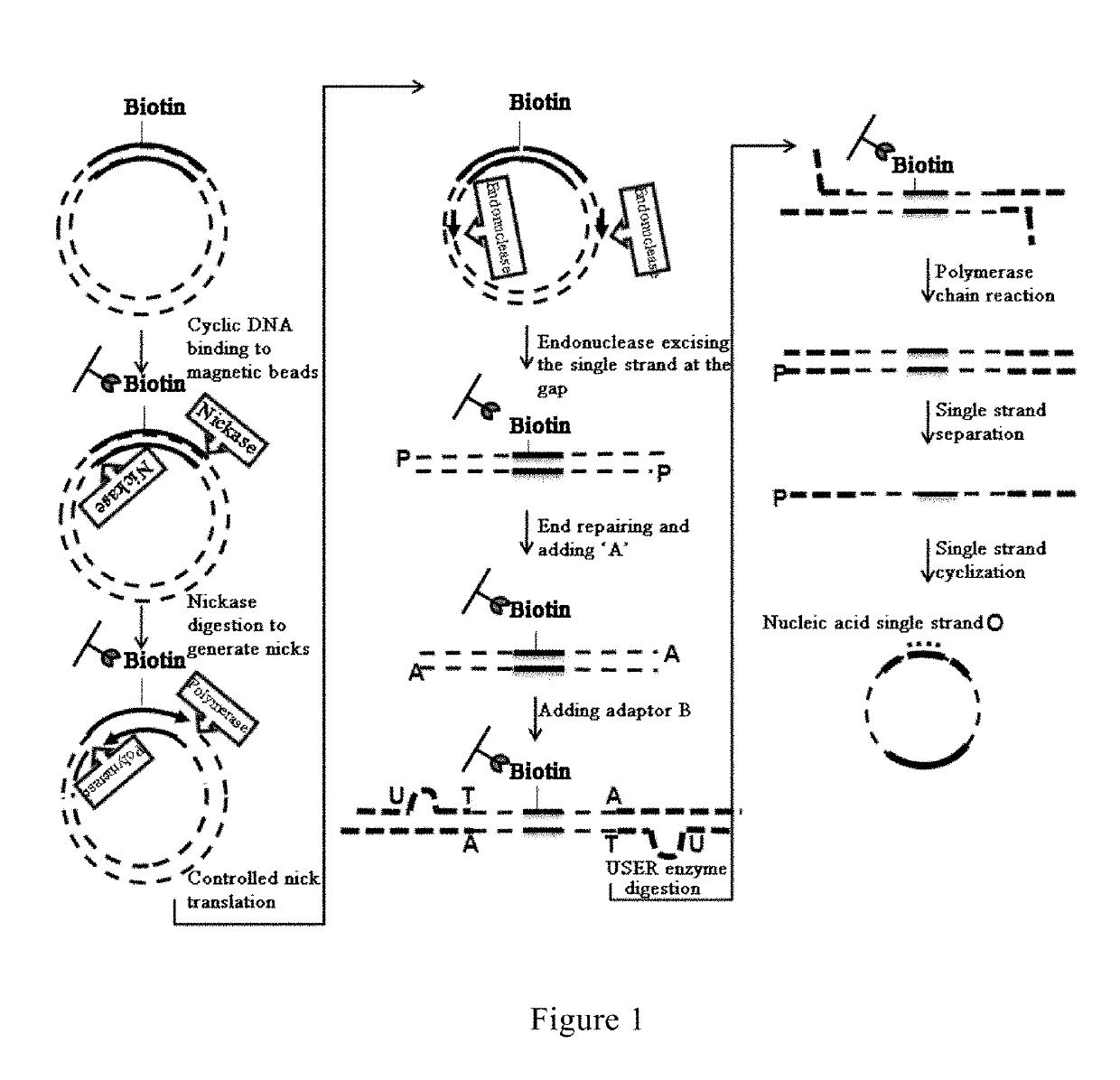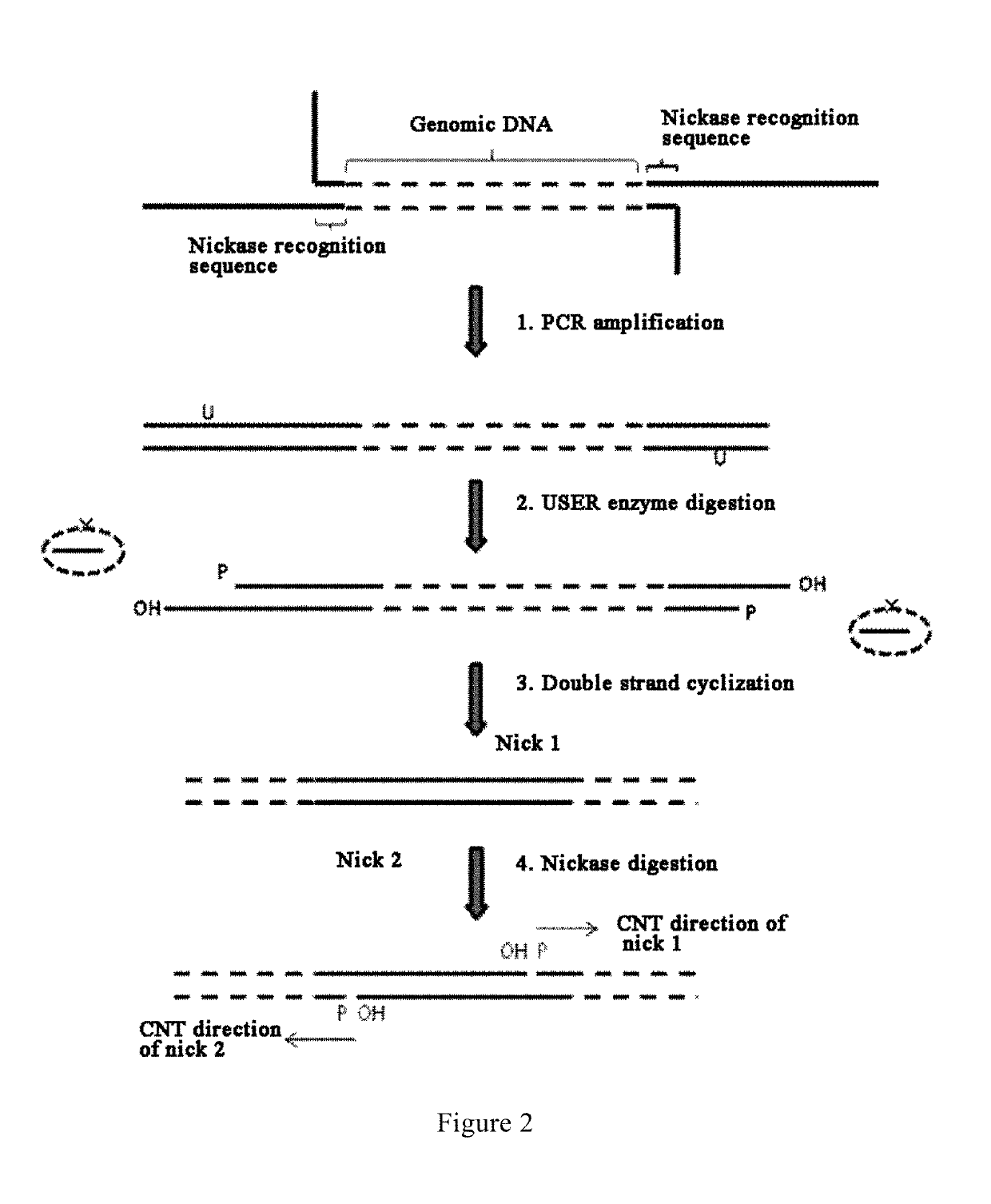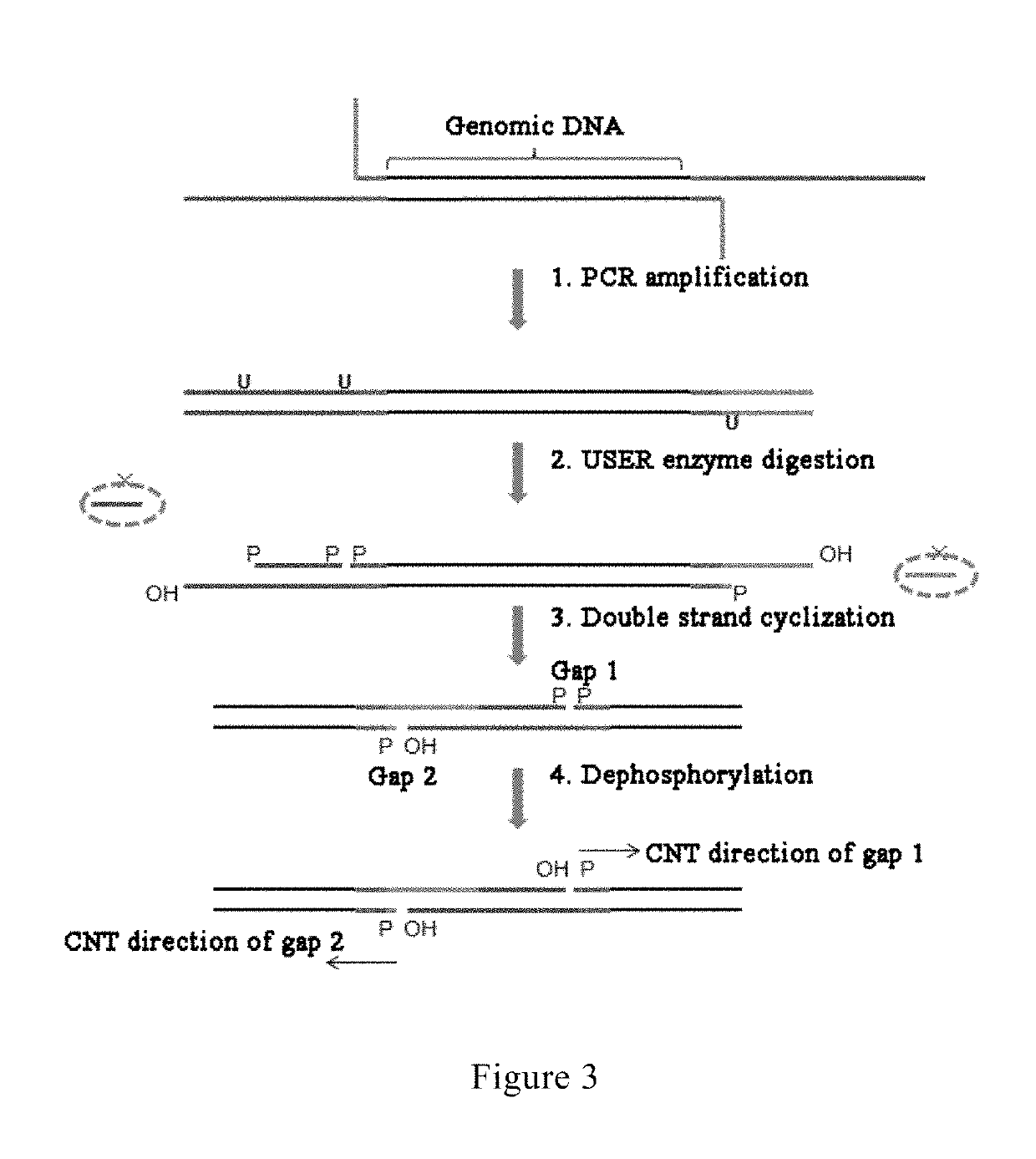Method and reagent for constructing nucleic acid double-linker single-strand cyclical library
a technology of nucleic acid fragments and cyclic nucleic acids, which is applied in the field of molecular biology, can solve the problems of increasing competition in the sequencing market, reducing the cost of second-generation sequencing, and reducing the time required for sequencing, so as to shorten the time required for library construction and save costs. , the effect of increasing the length of the library insert fragments
- Summary
- Abstract
- Description
- Claims
- Application Information
AI Technical Summary
Benefits of technology
Problems solved by technology
Method used
Image
Examples
Embodiment Construction
[0059]The present invention is described in further detail below by reference to particular embodiments. Unless otherwise stated, the techniques used in the following embodiments are all conventional techniques known to a person skilled in the art, and the instruments, equipments and reagents used are all publicly available, e.g. commercially available, to a person skilled in the art.
[0060]In the present invention, the concepts of “first” and “second” used in any cases should not be construed as conveying the meaning of order or technique, and they serve only to distinguish the objects to which they refer from other objects.
[0061]In the present invention, the first affinity label and the second affinity label can be a component in a biological binding reaction commonly used in biology, such as an antigen or antibody, a strand of a short double-stranded DNA fragment, a biotin or streptavidin, and the like. When an antigen is selected as the first affinity label, an antibody that bind...
PUM
| Property | Measurement | Unit |
|---|---|---|
| time | aaaaa | aaaaa |
| temperature | aaaaa | aaaaa |
| temperature | aaaaa | aaaaa |
Abstract
Description
Claims
Application Information
 Login to View More
Login to View More - R&D
- Intellectual Property
- Life Sciences
- Materials
- Tech Scout
- Unparalleled Data Quality
- Higher Quality Content
- 60% Fewer Hallucinations
Browse by: Latest US Patents, China's latest patents, Technical Efficacy Thesaurus, Application Domain, Technology Topic, Popular Technical Reports.
© 2025 PatSnap. All rights reserved.Legal|Privacy policy|Modern Slavery Act Transparency Statement|Sitemap|About US| Contact US: help@patsnap.com



